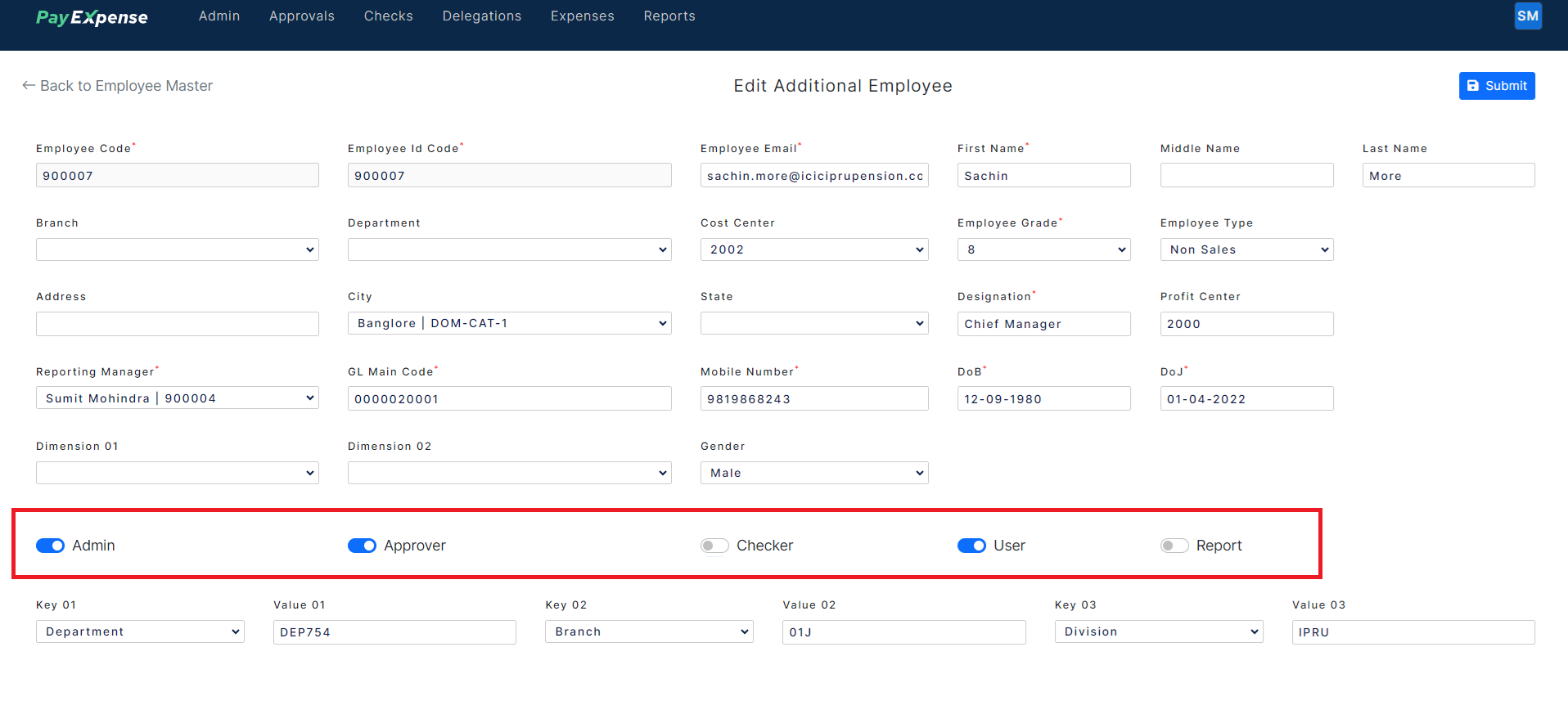User Roles and Access Control in PayExpense
A comprehensive overview of user roles and access control within PayExpense. Here's a breakdown of the key points:
Available User Roles:
- Admin: Holds the highest level of permissions, responsible for managing the system configuration, user access, and overall settings.
- Approver: Reviews and approves expense reports submitted by employees based on pre-defined workflows.
- Checker: May perform initial data validation or compliance checks on expense reports before they reach approvers. (This role might be present in some PayExpense versions)
- User / Employee: The standard role for employees to submit expense reports, access their expense history, and manage personal preferences within the system.
- Report: This could be a dedicated role with limited access to view reports and analyze expense data (availability might vary depending on the PayExpense version).
Assigning User Roles:
- Admin Responsibilities: Admins typically have the authority to assign user roles to employees within PayExpense. This is often done through a dedicated "User Management" section.
- Role Combinations: PayExpense might allow assigning single roles or combinations of roles to users. This provides granular control over user permissions. For example, an employee might be assigned both "User" and "Approver" roles if they have expense reporting and approval responsibilities.
User Invitations and Access:
- Invitation Emails: Upon user creation or role updates, PayExpense might automatically send invitation emails to new users. These emails typically include login credentials and instructions for accessing the system.
- Access Based on Role: Each user role has a predefined set of permissions within PayExpense. Users can only access functionalities and data relevant to their assigned role(s).
User/Employee Role Updates:
- Admin Authority: Admins generally have the most extensive control over user roles, allowing them to update or modify user access levels within the system.
- Limited Self-Service (Optional): Some PayExpense versions might offer limited self-service options for users to update specific profile information, but not necessarily their roles.
Benefits of Effective Role Management:
- Enhanced Security: Granular role-based access control minimizes the risk of unauthorized access to sensitive data within PayExpense.
- Improved Efficiency: Assigning roles based on responsibilities streamlines workflows and ensures users have the necessary permissions to perform their tasks.
- Reduced Errors: Limiting access to relevant functionalities based on roles minimizes the potential for errors or misuse of the system.
By understanding these user roles and access control mechanisms, organizations can leverage PayExpense to create a secure and efficient expense management environment for employees and administrators.

